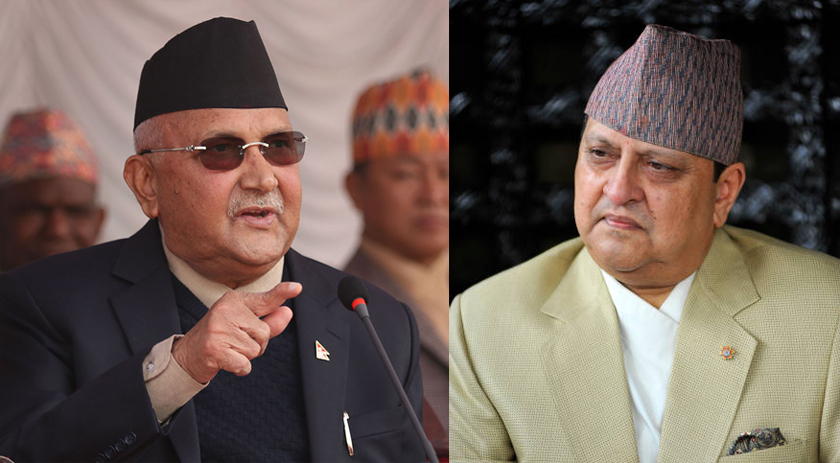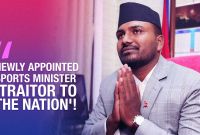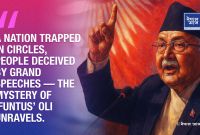Gyanendra Seeks the Crown, Oli Seeks to Capture Kathmandu — Where Do the People Go?

Kathmandu — As Nepal marked the 18th Republic Day, celebrating the fall of monarchy and the rise of a people-powered state, the soul of democracy seemed wounded right in its capital. Prime Minister KP Sharma Oli, in his official statement, proclaimed, “Today marks the day when the people shattered royal oppression to write history — a day when the nation triumphed over the crown, and citizens’ dignity replaced the arrogance of the throne.” But on the same day, he instructed his party cadres to “take control of Kathmandu,” sparking outrage and fear of authoritarian regression.
The National Human Rights Commission of Nepal condemned Oli’s statement, calling it a dangerous affront to democratic values and the rule of law. Critics warn that the Prime Minister’s words, uttered on a day meant to honor republicanism, verge on incitement to political takeover and reflect a growing intolerance toward civil opposition.
Adding fuel to the fire, a peaceful royalist rally in Tinkune turned deadly. Police cracked down using tear gas, water cannons, and batons — killing two people, including a journalist. The government’s aggressive suppression of dissent stood in sharp contrast to the celebratory banners about “freedom” and “people’s power” fluttering across the city.
Meanwhile, former King Gyanendra Shah released a video statement, calling on Nepalis to unite and restore monarchy. Expressing concern over the state of democracy, he appealed to citizens to support a return to the royal system — a move that many see as opportunistic and regressive.
The irony is painful: while one former ruler eyes the crown, the current republican leader mimics monarchical behavior. Gyanendra’s attempt to stage a royal comeback rides on nostalgia and disillusionment, while Oli’s push to “seize” the capital evokes memories of the very authoritarianism republic day was meant to replace.
During King Gyanendra’s direct rule from 2005 to 2006, Nepal witnessed a brutal crackdown on civil liberties — media censorship, mass arrests, and violent repression of protests. The king dissolved parliament and took control, citing national security. Those dark days were marked by curfews, phone and internet surveillance, and international condemnation. Thousands of activists, journalists, and students faced torture or imprisonment without trial.
The republic, born from this resistance, promised decentralization, inclusion, and citizen empowerment. And yet, eighteen years later, with protesters silenced and power centralized again, many ask: Has anything truly changed?
On a day meant to celebrate the defeat of authoritarianism, the actions of both Prime Minister Oli and former King Gyanendra reveal a chilling disregard for democratic values. The monarchy once wore a crown and ruled from the palace. The republic now wears a constitution but increasingly rules with the same iron grip.
The people of Nepal, who once marched through tear gas to claim their rights, must now decide: not between a crown or a chair, but between fear and freedom. After all, democracy lives not in slogans — but in courage, restraint, and relentless accountability.



